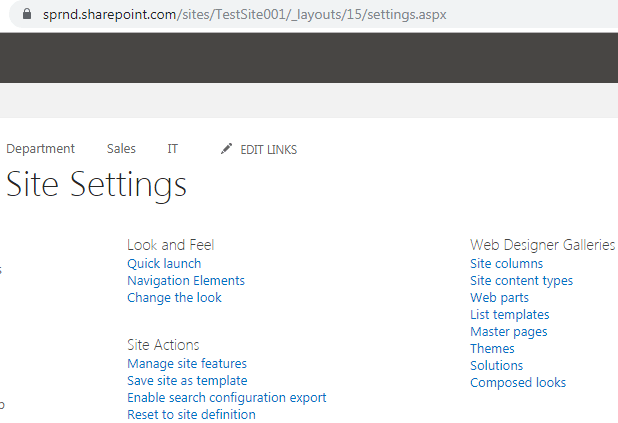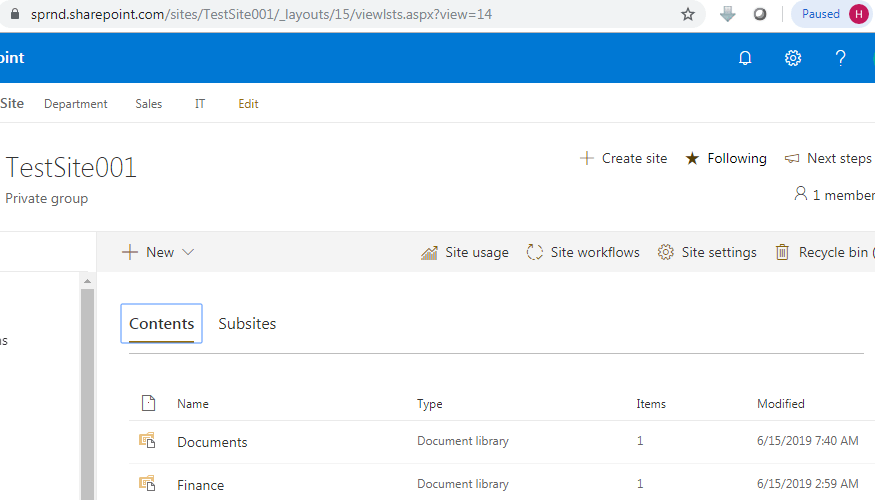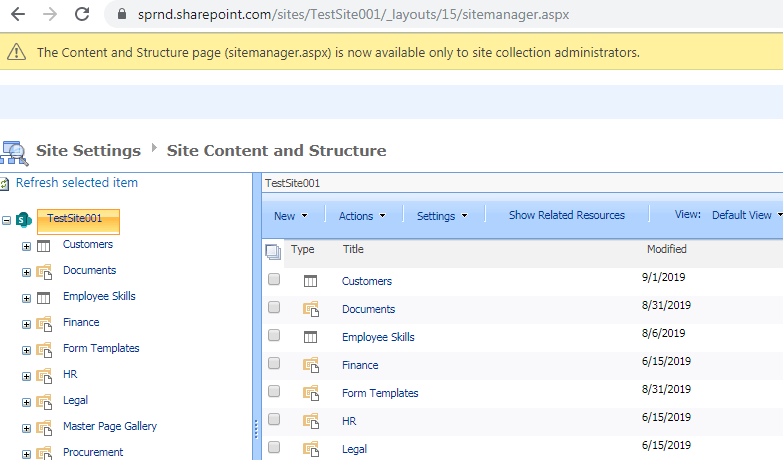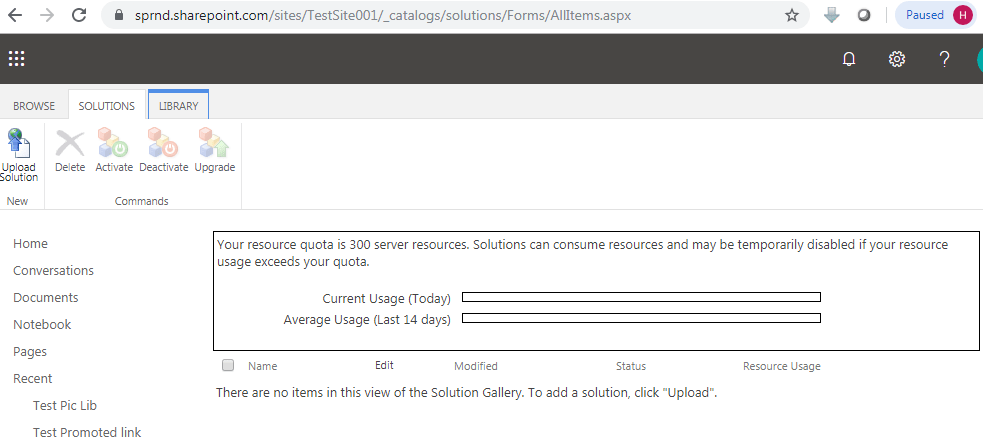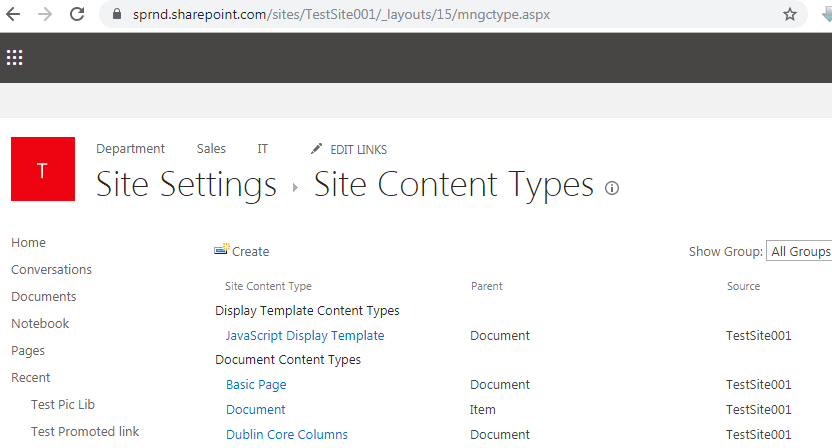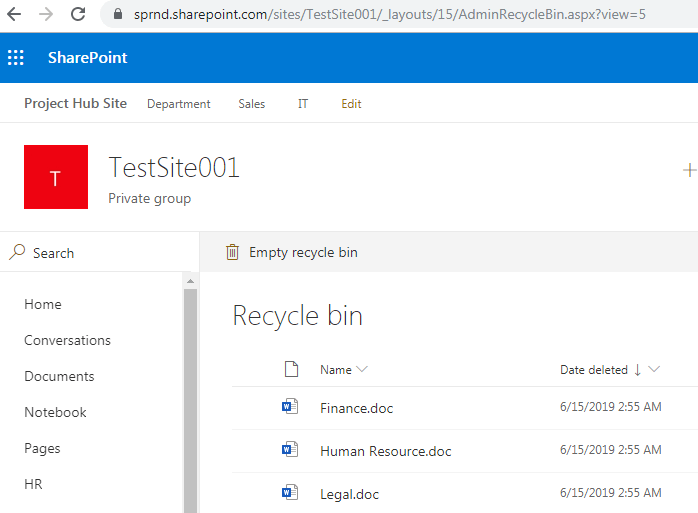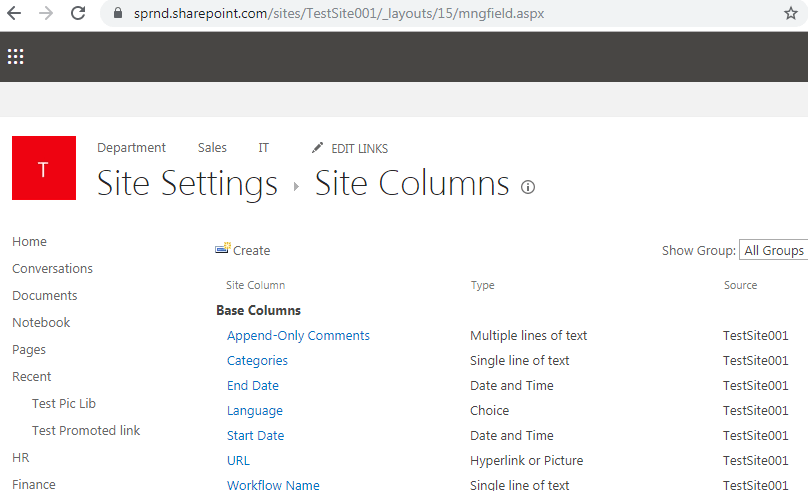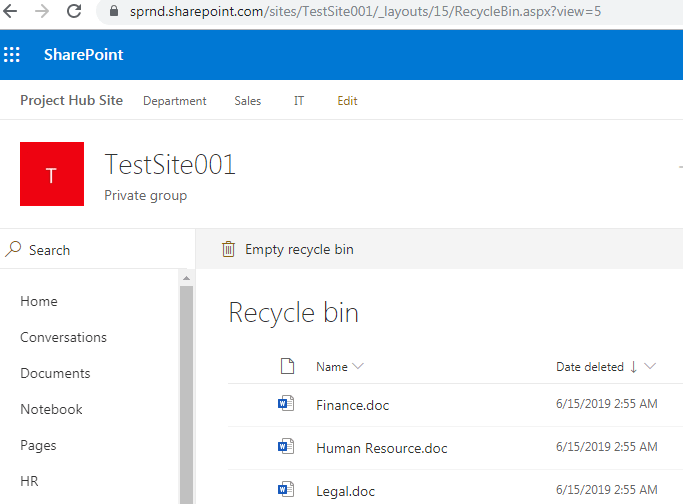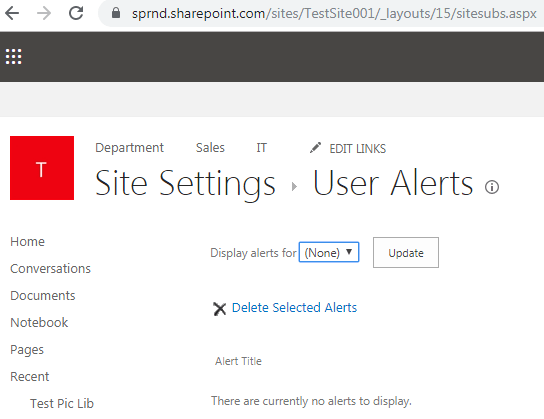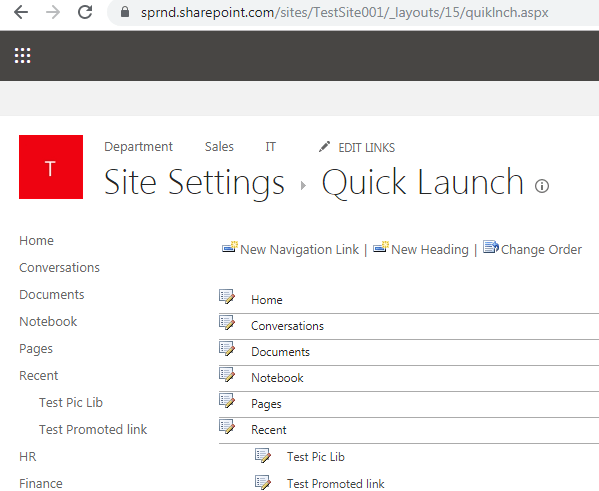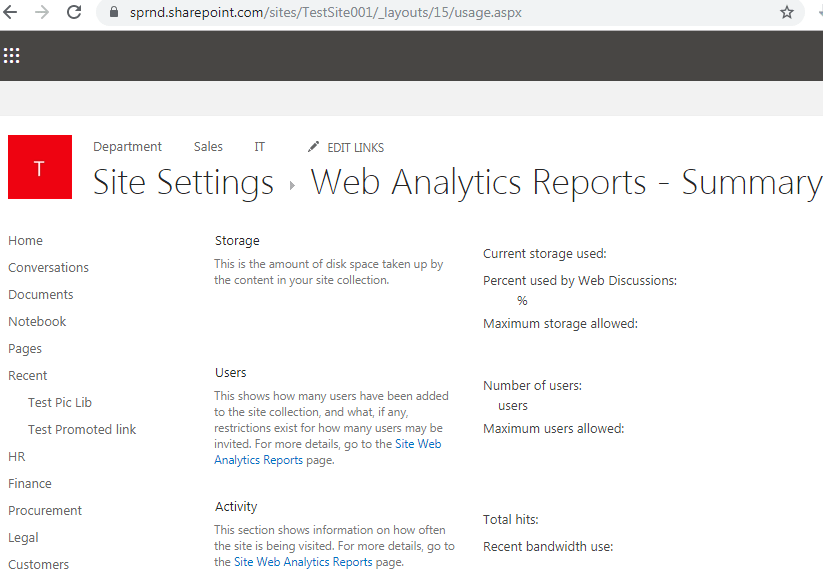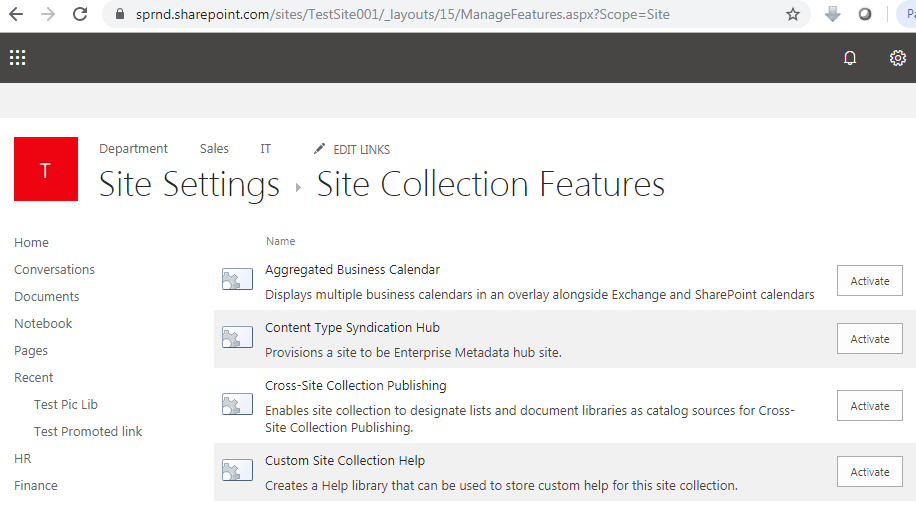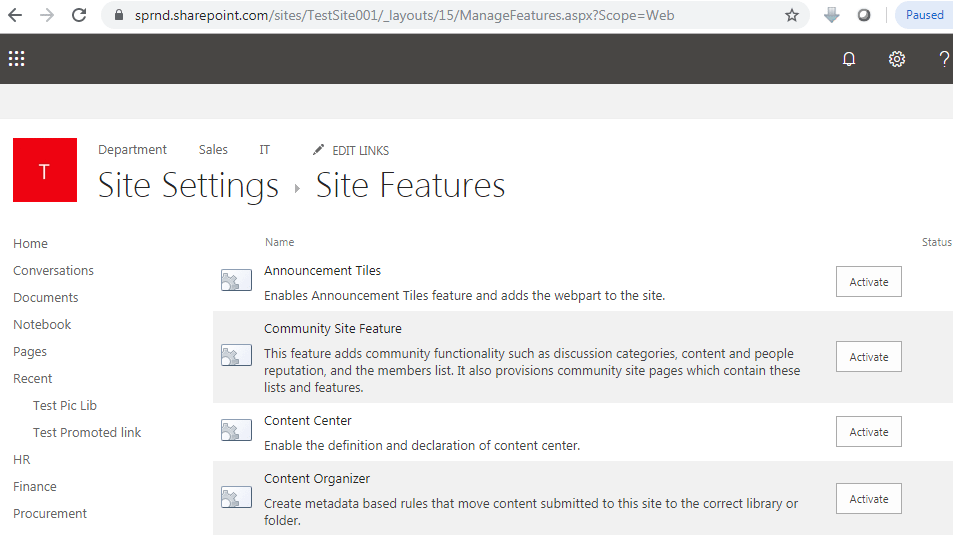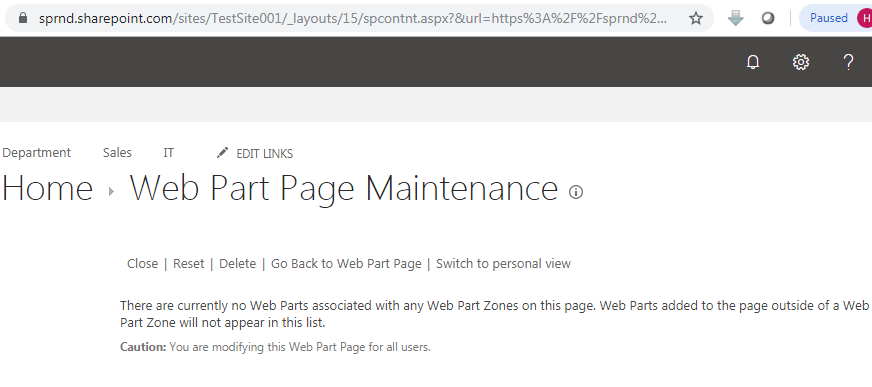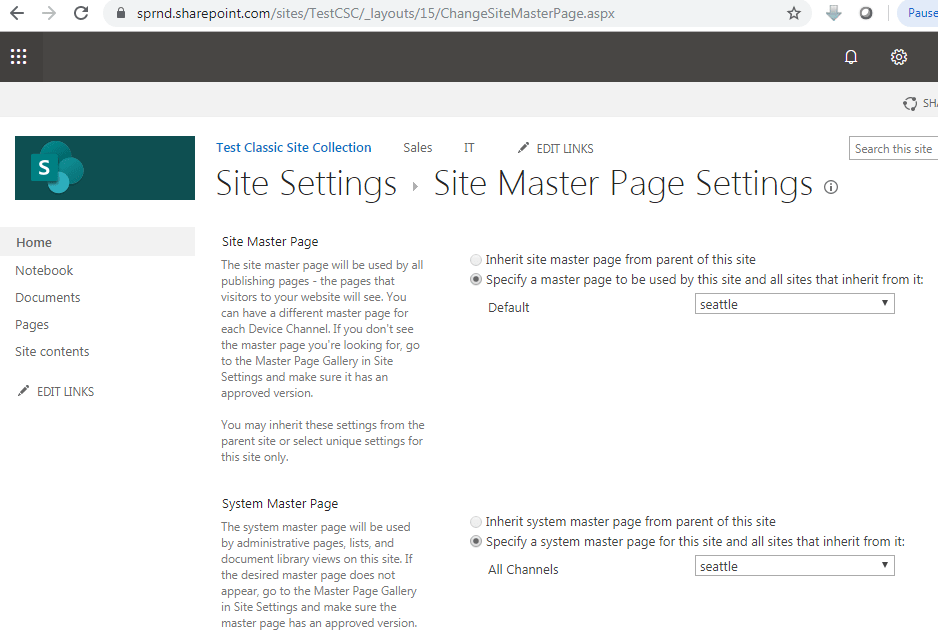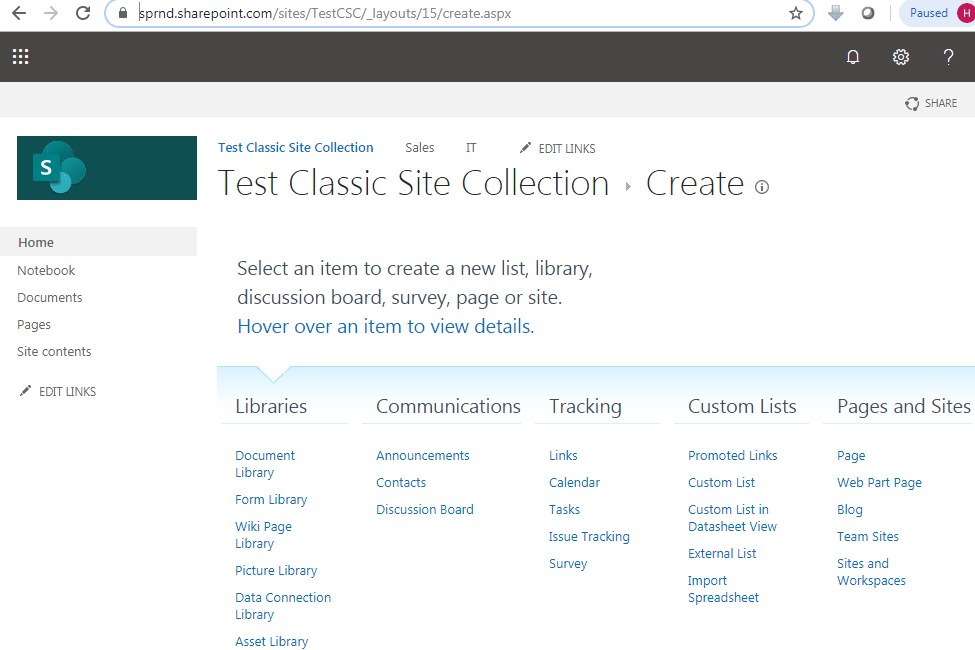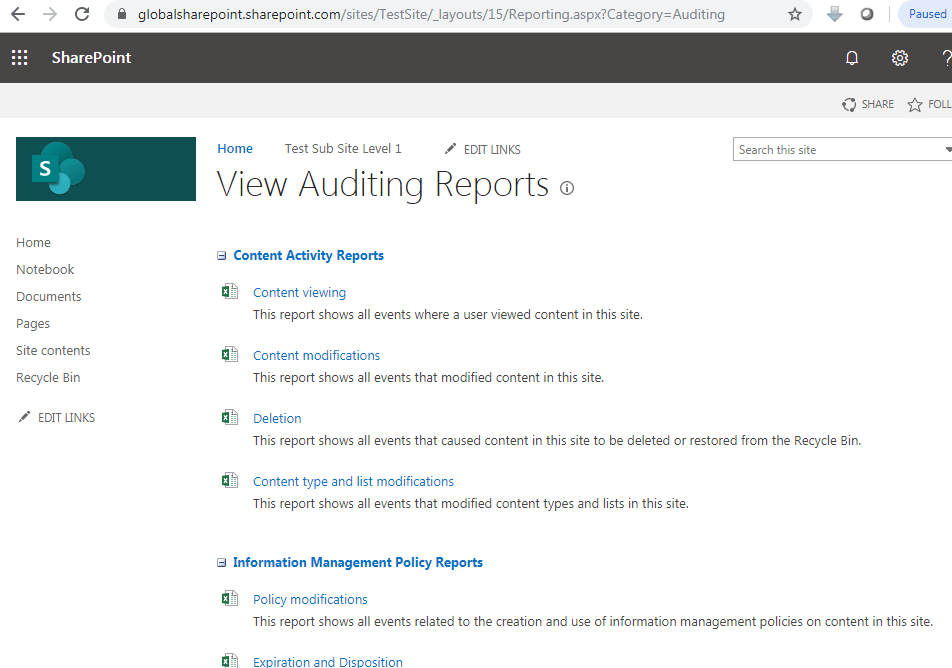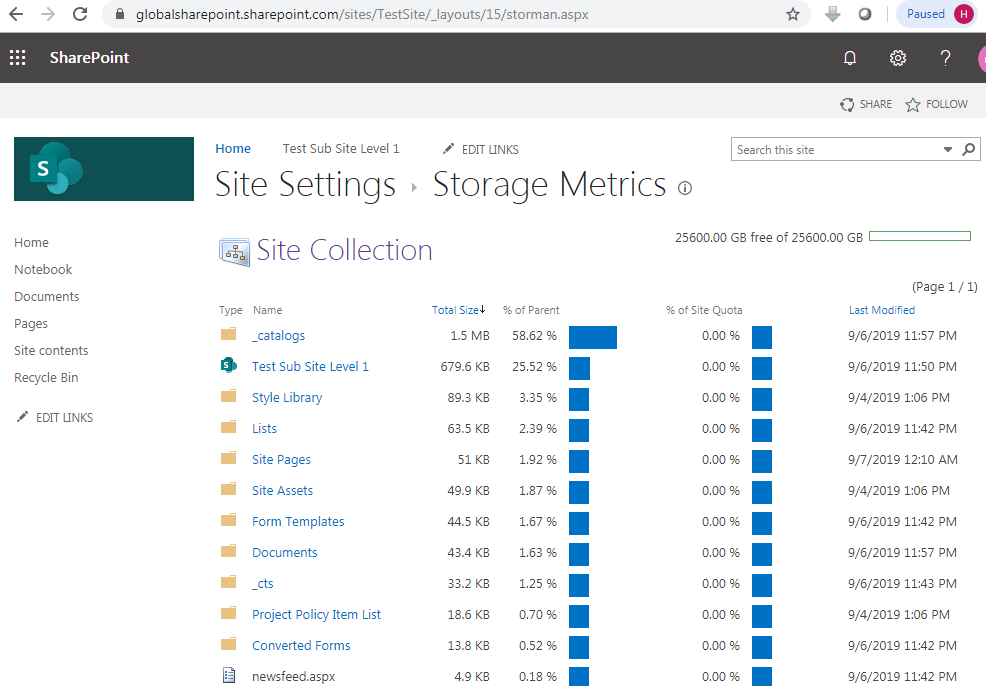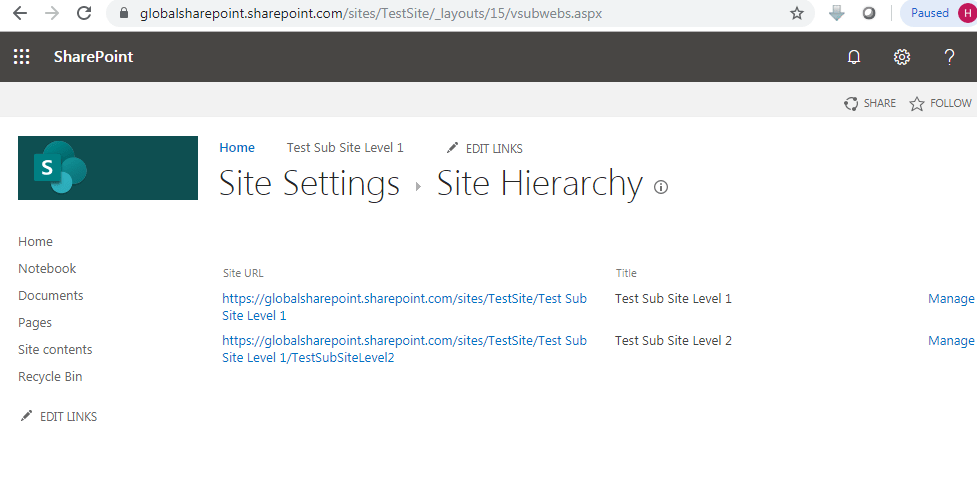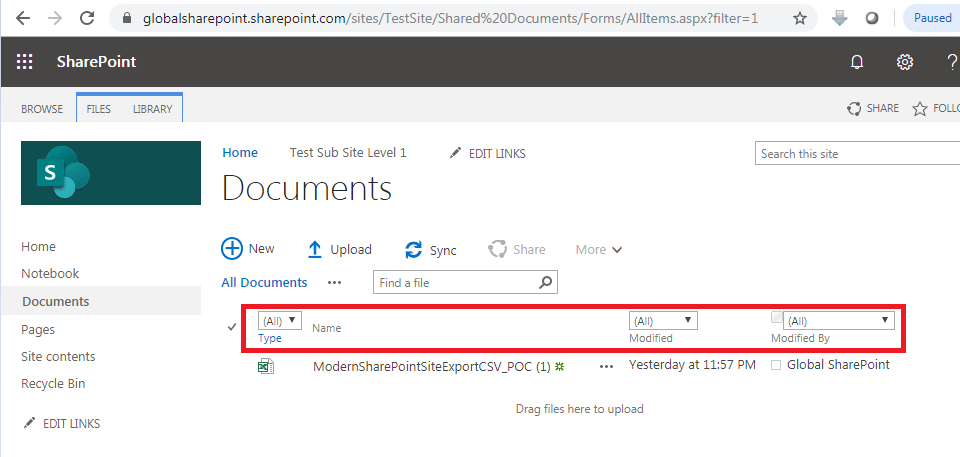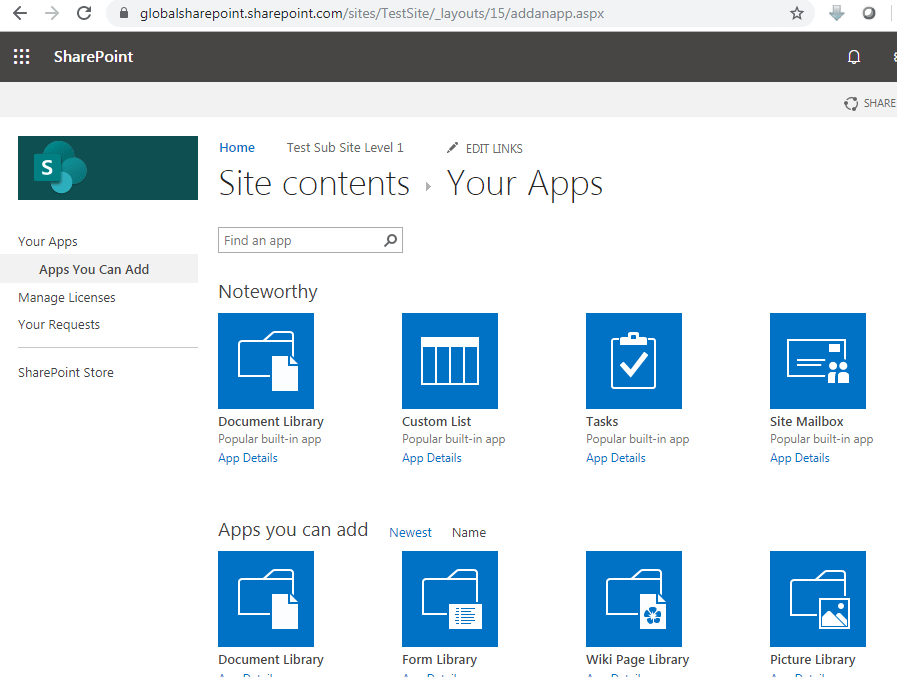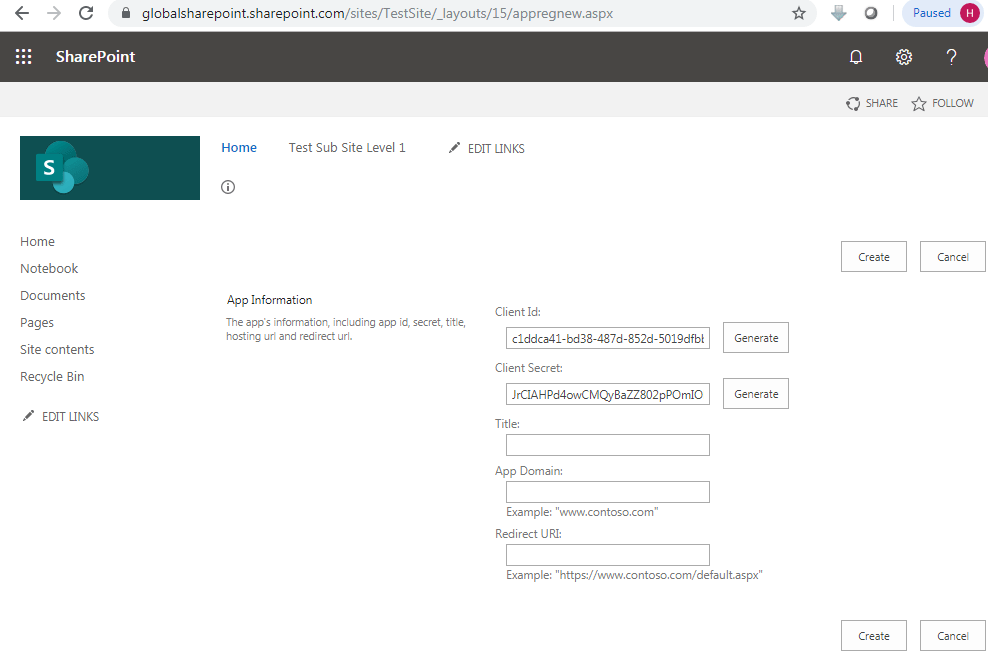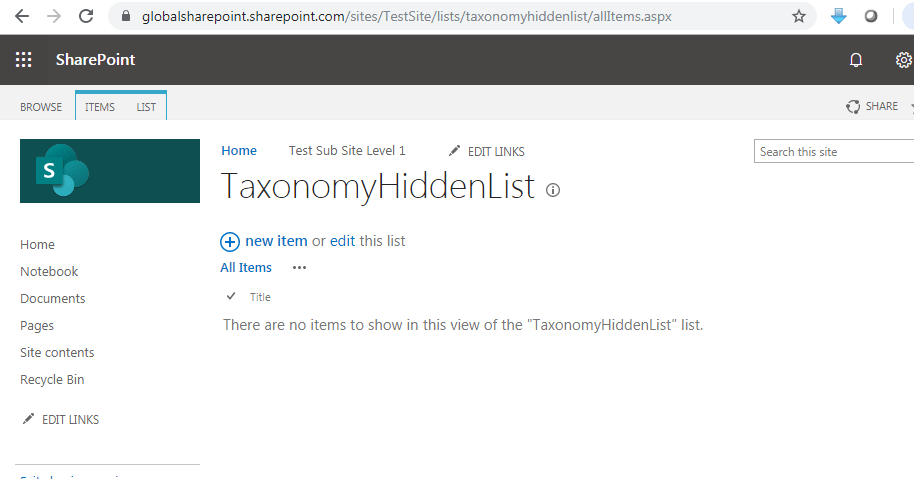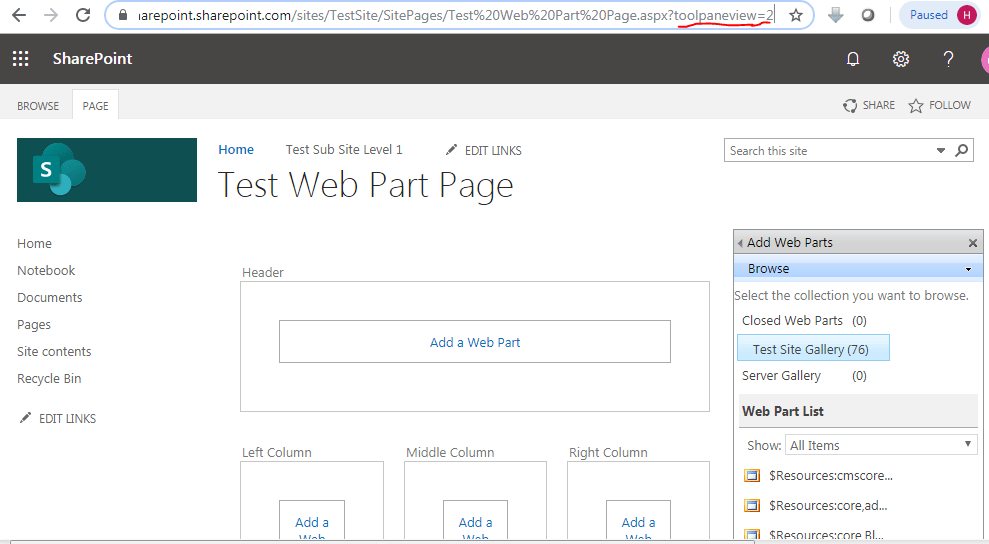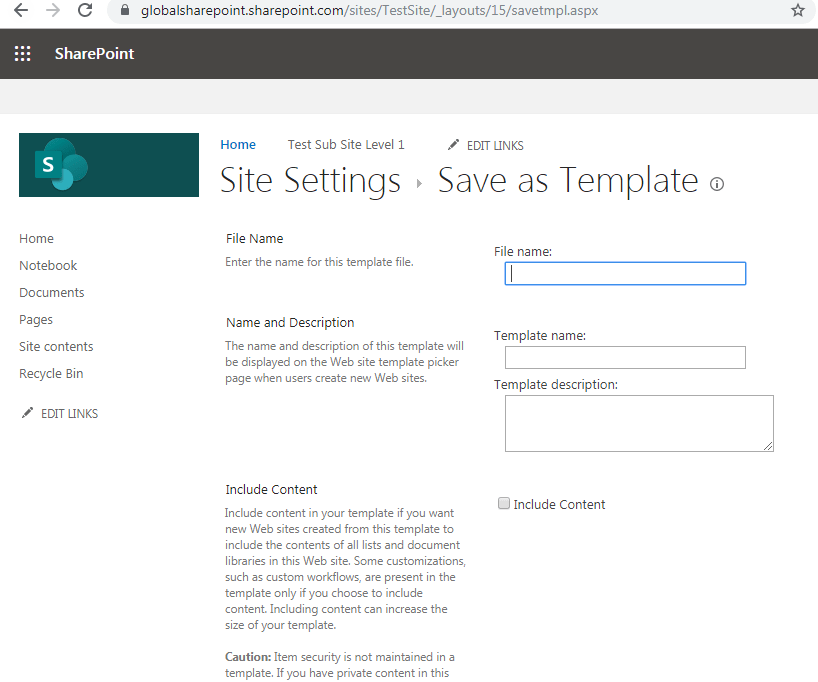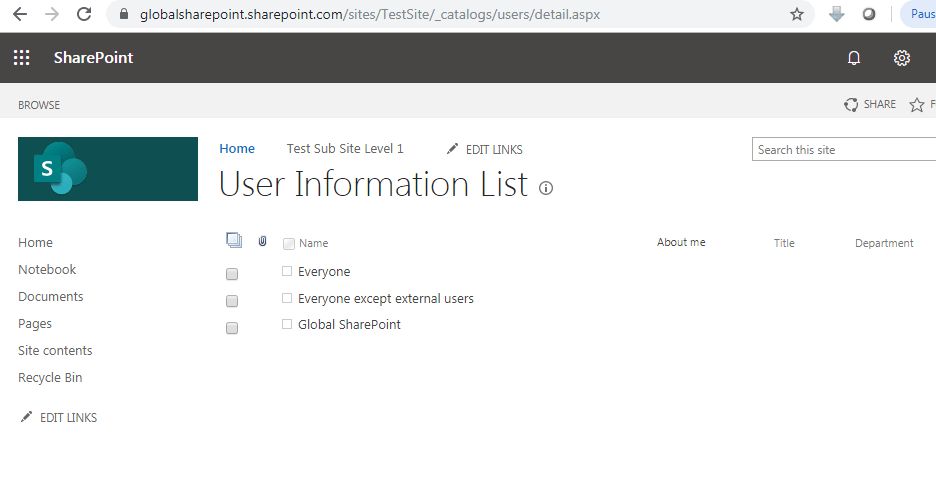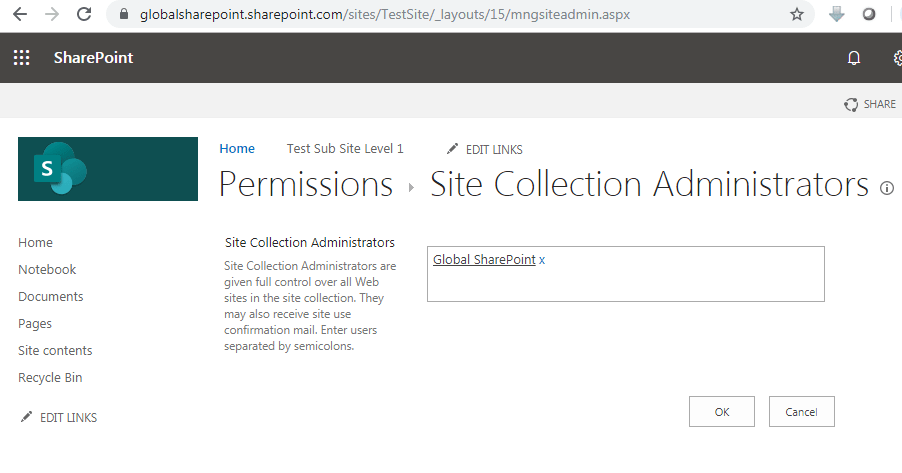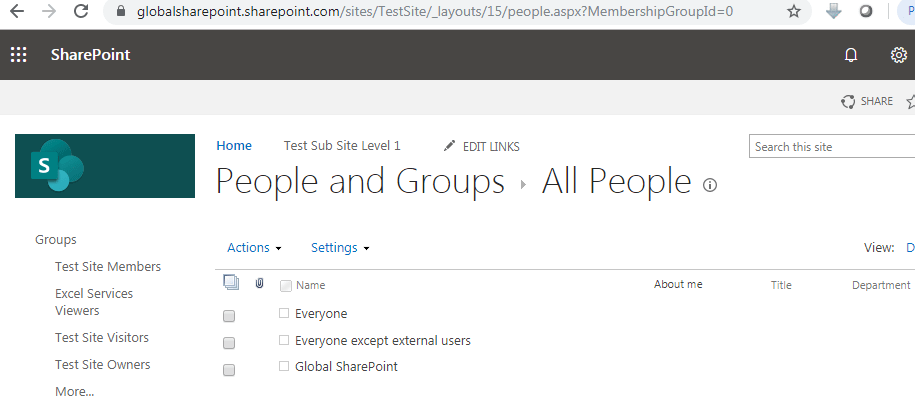SharePoint Layouts path URLs: Quick References
Introduction
Being an administrator or power user it is recommended to have or know about the shortcut URL this will save the time and increase the productivity instead of going thru the traditional navigation.
Why do we need to know shortcut URL?
Due to some reason when our traditional way of navigation does not work, the shortcut URL is the only way to proceed on otherwise we need to take PowerShell approach which needs coding effort. There are many scenarios where traditional navigation fails (in exceptional scenarios not always ). For example – we need to change the master page – for this even though the “SharePoint Server Publishing Infrastructure” is activated in site collection level but we won’t be seeing the change master page UI from the Site setting page – in this case we need to access the shortcut URL of changing the master page. One more example – in many cases due to browser rendering issue we won’t be able click on the edit page link to modify the web part – then we need to access the web part page URL directly.
So if we are handy with shortcut URLs – we can navigate to any administrative page directly.
Step by step explanation of shortcut URLs
In the below process, we’ll learn about the various SharePoint administrative pages and their usages.
1. Page Name: Site Settings
Description : This is to manage the site settings.
Url: /_layouts/settings.aspx
Syntax: “/_layouts/settings.aspx”
Example: “https://sprnd.sharepoint.com/sites/TestSite001/_layouts/settings.aspx”
2 Page Name: Site Contents
Description : This is to view the site contents, example: List/Library etc.
Url: /_layouts/viewlsts.aspx
Syntax: “/_layouts/viewlsts.aspx”
Example: ” https://sprnd.sharepoint.com/sites/TestSite001/\_layouts/viewlsts.aspx”
3. Page Name: Site Content and Structure Manager
Description : This is to view the site report and hierarchy of the sites.
Url: /_layouts/sitemanager.aspx
Syntax: “/_layouts/sitemanager.aspx”
Example: “https://sprnd.sharepoint.com/sites/TestSite001/_layouts/sitemanager.aspx”
4. Page Name: Solution Gallery
Description : This is to manage the solution(sandbox) – we can upload or delete or activate solution.
Url: /_catalogs/solutions/
Syntax: ” /_catalogs/solutions/”
Example: “https://sprnd.sharepoint.com/sites/TestSite001/_catalogs/solutions/”
5. Page Name: Site Content Types
Description : This is a center place to manage the content type, here we can create, delete content type etc.
Url: /_layouts/mngctype.aspx
Syntax: “/_layouts/mngctype.aspx”
Example: ” https://sprnd.sharepoint.com/sites/TestSite001/\_layouts/mngctype.aspx/“
6. Page Name: Site Collection Level Recycle Bin
Description : This is the place where site collection administrator can manage the recycle bin data at the site collection level.
Url: /_layouts/15/AdminRecycleBin.aspx
Syntax: “/_layouts/15/AdminRecycleBin.aspx”
Notes:
- First Stage Recycle Bin:/_layouts/15/AdminRecycleBin.aspx?View=1
- Second Stage Recycle Bin:/_layouts/15/AdminRecycleBin.aspx?View=2
- The default retention time for both first and second stage recycle bin is 93 days.
Example: “https://sprnd.sharepoint.com/sites/TestSite001/_layouts/15/AdminRecycleBin.aspx”
7. Page Name: Manage Site Columns
Description : This is the place where we can create,update,delete site columns and assign the columns to content type.
Url: /_layouts/mngfield.aspx
Syntax: “/_layouts/mngfield.aspx
Example: “https://sprnd.sharepoint.com/sites/TestSite001/_layouts/mngfield.aspx”
8. Page Name: Site Level Recycle Bin
Description : This is called site or user level recycle bin, using this page end user can restore their deleted items.
Url: /_layouts/RecycleBin.aspx
Syntax: “/_layouts/RecycleBin.aspx”
Example: “https://sprnd.sharepoint.com/sites/TestSite001/_layouts/RecycleBin.aspx”
9. Page Name: User Alerts
Description : Using this page we can mange the site level alerts.
Url: /_layouts/sitesubs.aspx
Syntax: “/_layouts/sitesubs.aspx”
Example: “https://sprnd.sharepoint.com/sites/TestSite001/_layouts/sitesubs.aspx”
10. Page Name: Quick Launch settings
Description : Using this page we can configure and manage navigation in quick launch.
Url: /_layouts/quiklnch.aspx
Syntax: “/_layouts/quiklnch.aspx”
Example: “https://sprnd.sharepoint.com/sites/TestSite001/_layouts/quiklnch.aspx”
11. Page Name: Navigation Settings
Description : Using this page we can configure and manage the global navigation.
Url: /_layouts/15/AreaNavigationSettings.aspx
Syntax:”/_layouts/15/AreaNavigationSettings.aspx
Example: “https://sprnd.sharepoint.com/sites/TestSite001/_layouts/15/AreaNavigationSettings.aspx”
12. Page Name: Site Usage
Description : This gives the summary of web analytical reports for the site.
Url: “/_layouts/usage.aspx”
Syntax: “/_layouts/usage.aspx”
Example: “https://sprnd.sharepoint.com/sites/TestSite001/_layouts/usage.aspx”
13. Page Name: Site Collection Features
Description : Using this page we can manage the site collection level features.
Url: /_layouts/ManageFeatures.aspx?Scope=Site
Syntax:”/_layouts/ManageFeatures.aspx?Scope=Site”
Note:
- Here “Site” is a case sensitive, it should be same as above “Site”
Example: “https://sprnd.sharepoint.com/sites/TestSite001/_layouts/15/ManageFeatures.aspx?Scope=Site”
14. Page Name: Site Features
Description : Using this page we can manage the site(web) level feature.
Url: /_layouts/15/ManageFeatures.aspx?Scope=Web or /_layouts/15/ManageFeatures.aspx
Syntax:/_layouts/15/ManageFeatures.aspx?Scope=Web
Note:
- Here “Web” is a case sensitive, it should be same as above “Web”
Example: “https://sprnd.sharepoint.com/sites/TestSite001/_layouts/15/ManageFeatures.aspx?Scope=Web”
15. Page Name: SharePoint Server Version
Description : This will give the information about which version of SharePoint server is running.
Url:/_vti_pvt/Service.cnf
Syntax:/_vti_pvt/Service.cnf
SharePoint on-premise:
“Site URL"/_vti_pvt/service.cnf”
SharePoint Online:
“https://tenant.sharepoint.com/_vti_pvt/service.cnf”
Example: “https://globalsharepoint.sharepoint.com/_vti_pvt/service.cnf”
16. Page Name: Web Part Page Maintenance
Description : Using this page we can maintain the web part like add, delete etc.
Url: <Site URL> ?Contents=1
Syntax:<Site URL>?Contents=1
Example: “https://sprnd.sharepoint.com/sites/TestSite001?Contents=1“
17. Page Name: Change Site Master Page
Description : Using this page we can change site master and system master page and also css file.
Url:” /_layouts/ChangeSiteMasterPage.aspx”
Syntax:”<Site URL>/_layouts/ChangeSiteMasterPage.aspx”
Notes:
- Site Master Page represents for user.
- System Master Page represents for Administrator.
- To open this URL successfully we must activate the site collection level feature “SharePoint Server Publishing Infrastructure” otherwise we’ll get error.
Example:“https://sprnd.sharepoint.com/sites/TestCSC/_layouts/ChangeSiteMasterPage.aspx“
18. Page Name: Create
Description : A master place to create all types of SharePoint objects like – Libraries, Custom Lists, Pages and Sites, Communication and Tracking.
Url: /_layouts/15/create.aspx
Syntax:”/_layouts/15/create.aspx”
Example: “https://sprnd.sharepoint.com/sites/TestCSC/_layouts/15/create.aspx”
19. Page Name: Audit Report
Description : Using this report page we can generate or export all types of events occurred in the SharePoint list/library etc. to excel.
Url: “/_layouts/15/Reporting.aspx?Category=Auditing”
Syntax:”/_layouts/15/Reporting.aspx?Category=Auditing”
Example: “https://globalsharepoint.sharepoint.com/sites/TestSite/_layouts/15/Reporting.aspx?Category=Auditing“
20. Page Name: Storage Matrix
Description : Using this report page we can see which list or library has consumed how much memory in a site collection and gives information about total occupied GB and allocated GB with the last modified date time information.
Url: “/_layouts/15/storman.aspx”
Syntax:”/_layouts/15/storman.aspx”
Example: “https://globalsharepoint.sharepoint.com/sites/TestSite/_layouts/15/storman.aspx“
21. Page Name: Site Hierarchy
Description : Using this page we can list out all sites and sub sites and manage those sites from here.
Url: “/_layouts/15/vsubwebs.aspx”
Syntax:”/_layouts/15/vsubwebs.aspx”
Example: “https://globalsharepoint.sharepoint.com/sites/TestSite/_layouts/15/vsubwebs.aspx“
22. Page Name: Enable Filter to the list view thru browser
Description : If we want to apply filter to the list/library view directly thru the URL , just at the end of the URL, we need to append the below.
Url: “?filter=1”
Syntax:”<List/Library URL>?filter=1″
Example: “https://globalsharepoint.sharepoint.com/sites/TestSite/Shared%20Documents/Forms/AllItems.aspx?filter=1“
23. Page Name: Your Apps
Description : Using this page we can add SharePoint inbuilt app like list/library, SharePoint Store apps and also we can mange the app license.
Url: “/_layouts/15/addanapp.aspx”
Syntax:”<List/Library URL>/_layouts/15/addanapp.aspx”
Example: “https://globalsharepoint.sharepoint.com/sites/TestSite/_layouts/15/addanapp.aspx“
24. Page Name: Apps Registration
Description : Using this page we can generate the app client id and client secret id, these id will be used while authenticating the SharePoint from other environment. like Azure.
Url: “/_layouts/15/appregnew.aspx”
Syntax:”/_layouts/15/appregnew.aspx”
Example: “https://globalsharepoint.sharepoint.com/sites/TestSite/_layouts/15/appregnew.aspx“
25. Page Name: Taxonomy Hidden List
Description : This is a hidden list – when we deal with managed metadata columns, sometimes we may need to refer this list.
Url: “/lists/taxonomyhiddenlist/allItems.aspx”
Syntax:”/lists/taxonomyhiddenlist/allItems.aspx”
Example: “https://globalsharepoint.sharepoint.com/sites/TestSite/lists/taxonomyhiddenlist/allItems.aspx“
26. Page Name: Web part page edit mode
Description : Using this page directly we can open the web part page in edit mode and add the web part into the page.
Url: “?toolpaneview=2”
Syntax:”?toolpaneview=2″
Example: “https://globalsharepoint.sharepoint.com/sites/TestSite/SitePages/Test%20Web%20Part%20Page.aspx?toolpaneview=2“
27. Page Name: Site save as template
Description : Using this page we can create template out of existing site and using the created template we can create other new sites.
Url: “/_layouts/15/savetmpl.aspx”
Syntax:”/_layouts/15/savetmpl.aspx”
Example: “https://globalsharepoint.sharepoint.com/sites/TestSite/_layouts/15/savetmpl.aspx”
28. Page Name: User Information List
Description : This is a hidden list -using this page we can get all users details. For example if we want get particular user details based on the ID using REST query, we need to hit this list.
Url: “/_catalogs/users/detail.aspx”
Syntax:”/_catalogs/users/detail.aspx”
Example: “https://globalsharepoint.sharepoint.com/sites/TestSite/_catalogs/users/detail.aspx”
29. Page Name: Site Collection Administrators
Description : This is site collection administrator page where we can assign site collection administrator role to the user . This shortcut URL will be helpful when sometimes due to some reason we won’t be able to navigate to this page thru site setting navigation.
Url: “/_layouts/15/mngsiteadmin.aspx”
Syntax:”/_layouts/15/mngsiteadmin.aspx”
Example: “https://globalsharepoint.sharepoint.com/sites/TestSite/_layouts/15/mngsiteadmin.aspx”
30. Page Name: All People
Description : Using this page we can delete user from site collection.
Url: “/_layouts/15/people.aspx?MembershipGroupId=0”
Syntax:”/_layouts/15/people.aspx?MembershipGroupId=0″
Example: “https://globalsharepoint.sharepoint.com/sites/TestSite/_layouts/15/people.aspx?MembershipGroupId=0”
Shortcut URLs Table
| No | Page Name | Page Url |
| 1 | Site Settings | /_layouts/settings.aspx |
| 2 | Site Contents | /_layouts/viewlsts.aspx |
| 3 | Site Content and Structure Manager | /_layouts/sitemanager.aspx |
| 4 | Solution Gallery | /_catalogs/solutions/ |
| 5 | Site Content Types | /_layouts/mngctype.aspx |
| 6 | Site Collection Level Recycle Bin | /_layouts/15/AdminRecycleBin.aspx
First Stage Recycle Bin: /_layouts/15/AdminRecycleBin.aspx?View=1 Second Stage Recycle Bin: /_layouts/15/AdminRecycleBin.aspx?View=2 |
| 7 | Manage Site Columns | /_layouts/mngfield.aspx |
| 8 | Site Level Recycle Bin | /_layouts/RecycleBin.aspx |
| 9 | User Alerts | /_layouts/sitesubs.aspx |
| 10 | Quick Launch settings | /_layouts/quiklnch.aspx |
| 11 | Navigation Settings | /_layouts/15/AreaNavigationSettings.aspx |
| 12 | Site Usage | /_layouts/usage.aspx |
| 13 | Site Collection Features | /_layouts/ManageFeatures.aspx?Scope=Site
Note: Here “Site” is case sensitive, it should be same as above “Site“ |
| 14 | Site Features | /_layouts/15/ManageFeatures.aspx?Scope=Web
or /_layouts/15/ManageFeatures.aspx Note: Like above here also “Web” is case sensitive, it should be same as above “Web“ |
| 15 | SharePoint Server Version | /_vti_pvt/Service.cnf
Note: This url only will work in SharePoint On-Premise . |
| 16 | Web Part Page Maintenance | ?Contents=1 |
| 17 | Change Site Master Page | /_layouts/ChangeSiteMasterPage.aspx
Note: To open this url successfully we must activate the site collection level feature “SharePoint Server Publishing Infrastructure” otherwise we’ll get error. |
| 18 | Create | /_layouts/15/create.aspx |
| 19 | Audit Report | /_layouts/15/Reporting.aspx?Category=Auditing |
| 20 | Storage Matrix | /_layouts/15/storman.aspx |
| 21 | Site Hierarchy | /_layouts/15/vsubwebs.aspx |
| 22 | Enable Filter to the list view thru browser | ?filter=1 |
| 23 | Your Apps | /_layouts/15/addanapp.aspx |
| 24 | Apps Registration | /_layouts/15/appregnew.aspx |
| 25 | Taxonomy Hidden List | /lists/taxonomyhiddenlist/allItems.aspx |
| 26 | Web part page edit mode | ?toolpaneview=2 |
| 27 | Site save as template | /_layouts/15/savetmpl.aspx |
| 28 | User Information List | /_catalogs/users/detail.aspx |
| 29 | Master Page Gallery | /_catalogs/masterpage/Forms/AllItems.aspx |
| 30 | Site Collection Administrators | /_layouts/15/mngsiteadmin.aspx |
| 31 | All People | /_layouts/15/people.aspx?MembershipGroupId=0 |
Summary
Hence, in this article we have learned the various shortcut URLs those can be accessed directly thru the layouts path or hidden page URL. As a whole we can say this article can be used as a quick reference to access SharePoint administrative page URLs.
